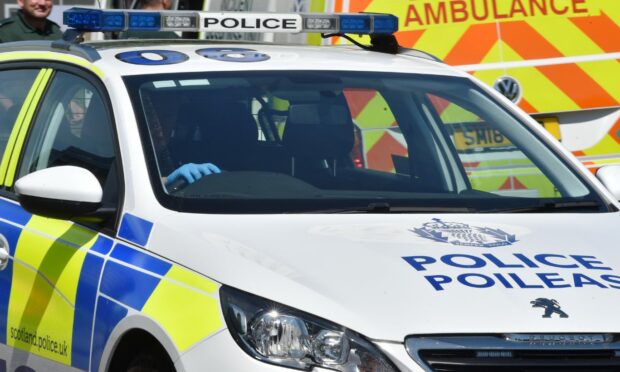Police have been taking sick and injured people to hospital across Scotland, according to reports, as pressure on the ambulance service continues.
The Scottish Police Federation said it had recorded around 30 cases of officers being asked to attend emergencies and either wait for parademics to arrive or drive a person to be treated themselves.
The reports released by the union include a man who was taken to hospital by officers more than two hours after calling NHS24 to say he had taken an overdose, and another man with an injured leg who the police drove to be treated five hours and 40 minutes after an ambulance was called.
However, the Scottish Ambulance Service said police officers would only be asked to attend calls for them and transport patients under very specific circumstances in the north of Scotland.
‘Where does policing responsibility stop?’
The reports are published in 1919 Magazine, which is affiliated with and funded by the Scottish Police Federation (SPF).
Gordon Forsyth, the SPF’s assistant to the general secretary (health and safety), said: “Cops out there are taking people to hospital in the back of police cars simply because the ambulance is going to be hours, or there isn’t anybody suitable to leave the person with and stand down.
“I’ve got a list of 30-odd examples, various things where the cops have been sent to calls because an ambulance hasn’t been available, or having to wait for a significant period of time for an ambulance to get there.
“It all goes back to the question of where does the policing responsibility stop and start?”
Police ‘not asked to transport patients’
Over the summer, attention has been drawn to lengthy waiting times suffered by patients across Scotland who have called the ambulance, with NHS Grampian saying staff were “under more pressure than at any other time throughout the pandemic”.
Responding to the reports in 1919 Magazine, an ambulance spokesperson said: “Police officers are only requested to attend cardiac arrest calls as a first response in the north of Scotland and they are immediately backed up by an ambulance resource.
“This is line with pre-pandemic co-responding agreements. In no other situation would police officers attend ambulance 999 calls or be asked to transport patients to hospital.”
A Scottish Government spokesman said: “Scotland is well served by its police service, and its hardworking, dedicated and professional officers and staff who have worked tirelessly throughout the pandemic.
“As the Scottish Ambulance Service have previously set out, they do not ask police officers to attend emergency situations instead of an ambulance crew or transport patients to hospital.
“For all 999 calls, the ambulance service will always dispatch the nearest, most appropriate response.”
